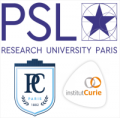Editorial
Unlocking the Protein Universe: Challenges and Innovations
Our research unit is dedicated to developing high-performance, specific, and sensitive methodologies for identifying, quantifying, and characterizing proteins, peptides, and other peptidomimetic molecules, such as toxins at the molecular level. Our primary goal is to decipher the secrets of the protein universe and contribute to a better understanding of biological mechanisms and human pathologies.
A Wide Range of Analytical Techniques
Our laboratory relies on cutting-edge expertise in mass spectrometry coupled with various separation and enrichment techniques. Key tools include MALDI-TOF/TOF MS detection, which is used for molecular mapping, tissue imaging, and archaeological screening. Nano-liquid chromatography (nanoLC) coupled with tandem mass spectrometry (MS/MS) offers increased sensitivity and precision for analyzing complex mixtures and identifying post-translational modifications.
Innovative Approaches for Multiple Applications
The unit develops innovative methodologies for protein analysis, addressing the analytical challenges posed by the complexity of biological samples and the limited amount of material available. Top-down, middle-down, and bottom-up analysis allows proteins to be studied at different levels of organization. Nano-liquid chromatographic techniques, either one-dimensional (LC-1D) or multidimensional (LC-2D), and peptide fragmentation by techniques such as CID, HCD, ETD, and UVPD contribute to the complete characterization of proteins and their modifications.
A Commitment to Innovation and Collaboration
The unit is committed to developing stable isotope labeling methods and strategies for obtaining qualitative and quantitative information on protein expression and post-translational modifications. Integrating microfluidics allows for increased sensitivity and reduced information loss during sample handling.
A Laboratory Facing the Future
Our constant commitment to research and innovation aims to advance the knowledge of the protein world and pave the way for new applications in fields such as medicine, biotechnology, and forensics. By sharing our discoveries and collaborating with the scientific community, we contribute to advancing science and developing solutions for the challenges of tomorrow.


